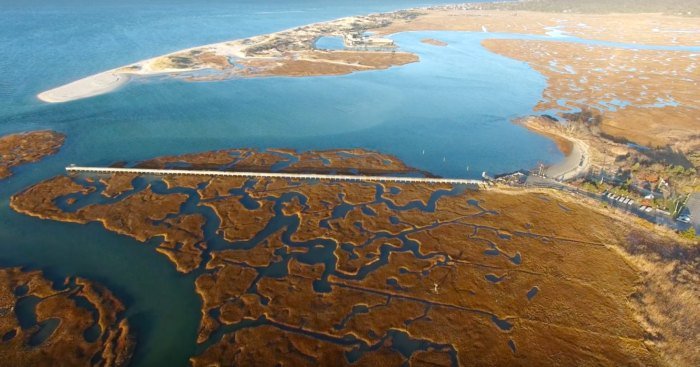When you stand on the boardwalk at Bass Hole, and look toward Dennis, a strange looking group of buildings, known by locals as “the clam factory,” sits prominently on the edge of Chase Garden Creek, on the inside of Chapin Beach. At night, a green glow seems to emanate from it, further adding to its mystery.
The area where this “factory” is located has a rich and storied history. The indigenous peoples were the first to see the benefits of this area. They probably practiced the first aquaculture in America, when they went shellfishing. Many times, they must have gathered more than they needed, and they kept the ones not used in known locations to make them easier to find the next time. Evidence of their having been in the area are common, and shell middens (piles of shells) can still be seen on Sandy Neck. Sandy Neck was likely a nicer place for them than Bass Hole, for the summer winds there kept off the dreaded gnats, mosquitoes, and greenheads.
Photo by Christopher Seufert
The early colonials called this large area Bass Hole, evidence of nature’s bounty.
To the west of the creek, a sandy beach stretched from Bass Hole all the way around to Mill Creek on the Barnstable town line. Yarmouth people were calling this beach “Gray’s Beach” before 1700. The beach lasted until after World War II, when a series of hurricanes in the 1950s washed away the sand. The town of Yarmouth had to dig out the present small crescent of beach to recreate a bathing section for townspeople on the north side. One of the evidences that Gray’s Beach used to extend much further than it does today is the remains of pilings in Clay’s Creek. Where the boardwalk now ends, you can see cut off pilings below the water in the creek in mute testimony to a longer boardwalk and extensive beaches which used to exist on the other side of that creek.
A family group enjoying Gray’s beach in the 1940s.
Ship building thrived on the island in the middle of Chase Garden Creek (then called a river). The island, very near the present clam factory, was known as the “Horseshoe shipyards”, and vessels were built there after the American Revolution until the 1820s weighing up to 100 tons burthen. Further up stream, other shipbuilding enterprises thrived as well, at Bray’s shipyard, and at Hull’s and Homer’s docks.
Yarmouth had its first Town Dock right here at Bass Hole, and during the American Revolution, the British recognized this area as one of the two major ports on Cape Cod. One British map, printed in 1776, identifies only two harbors on Cape Cod: what is now Provincetown and Bass Hole. The silting in of the area in the 1820s led to moving the town wharf further west over to the Mill Creek area.
Until the hurricanes hit in the 1950s, George Chapin had a large duck hunting camp on the Dennis side of Chase Garden Creek. It was from him that Chapin Beach was acquired by the town of Dennis and the Aquacultural Research Corporation was able to purchase its property in 1960 to begin growing clams. Founded by two men who served on a US Navy submarine together, W. Van Alan Clark, Jr and Dick Loring talked about what to do when they left the service. According to ARC’s website, “they decided to try developing a system of growing shellfish from the hatchery stage through growout to market size. They chose to start with steamers, or soft-shelled clams – and Aquacultural Research Corporation was born in 1960.”
Aquacultural Research Corporation has tried growing both soft shelled clams as well as hard shelled clams, but has found more success with hard shelled clams. Cape Codders would call them quahogs, but that name isn’t known across the country.
A 1990s aerial image of ARC.
At the clam factory (even the people who work there called it that - or the clam farm), they developed aquacultural processes to grow hard shelled clams. Their research is privately funded and is aimed toward their own products. A broad based staff of marine biologists, engineers, and technicians culture the clams and monitor quality from the hatchery right up to shipping. Control of the growth processes provides a reliable, consistent supply of clams throughout the year.
In 1993, the corporation reorganized, and at that time gave 220 acres of marshland to the Dennis Conservation Trust. Much of the marsh visible from the road when driving to Chapin Beach is part of these 220 acres. The remaining land and buildings continue to grow clams for the clam factory’s national market.
The process of growing clams starts in the winter. From December to spring, the hatchery portion of the clam factory is in full operation. Select parent stock of shellfish are carefully bred in the facility’s hatchery and are reared in specially designed tanks and systems. The “seed” produced is, in fact, juvenile shellfish, and must be fed. The large aquatic greenhouses on the property exist so that Aquacultural Research Corporation can grow microscopic algae to feed these new clams. Algae only grow when there is light, and winter light is at best marginal, so lights are installed in these greenhouses. The light shines through the plastic green roofs, giving off the strange glow that can be seen there at night.
Following the larval stages, young clams are moved to an indoor nursery system where heated seawater and the cultured food produce accelerated growth before their transfer to protected field cages. Final “grow out” occurs in a natural bottom in certified tidal areas to ensure pure natural flavor and highest quality. That Aquacultural Research Corporation can use the waters around Bass Hole speaks highly for the quality of water there.
The clams, after harvesting, are bagged and sent in refrigerator trucks, or in insulated boxes if being shipped by air. In less than 48 hours, the clams go from the waters at Cape Cod to the customers’ plates.
The clam factory also grows surf clams, scallops, and oysters to sell to other growers. The town of Yarmouth buys some of its quahogs to stock its beds from Aquacultural Research Corporation. If you’ve purchased a shellfish license in Yarmouth and gone “clamming”, you probably have eaten some of the mollusks raised right on Chase Garden Creek. Other towns also make purchases from the company.
Unfortunately for those who would like to visit, there is no insurance to cover the liability of having visitors, nor are there workers who can give tours to those who show up. This is a private corporation and for that reason there is a privacy sign posted as you enter from Chapin Beach road.
For Cape Codders, it’s reassuring to know that efforts are being made by Aquacultural Research Corporation to insure the future quality of hard shelled clams on Cape Cod. About the only thing that might make one shudder in fright, would be at the thought that these Cape Cod clams could be sent to New York and be ruined by the addition of tomatoes to the clam chowder!
Researched and written by Duncan Oliver.







